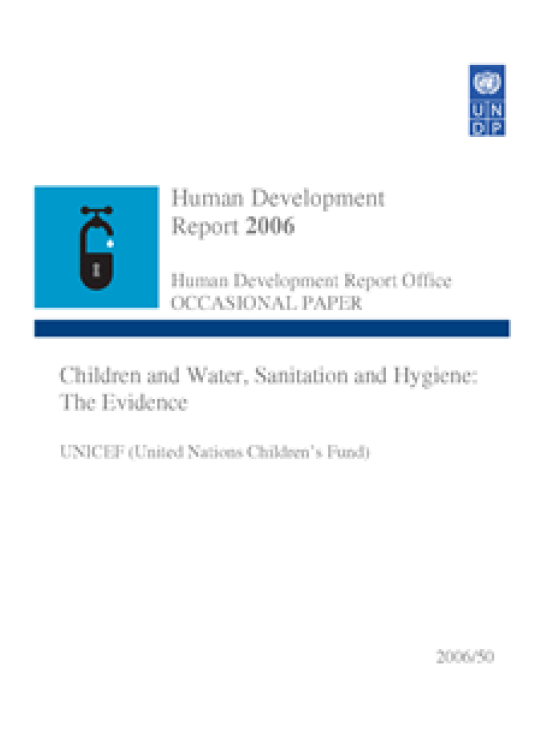Children and Water, Sanitation and Hygiene: The Evidence

Download Report by Language
Document
unicef.pdf
(97.32 KB)
Citation
UNICEF (United Nations Children's Fund). 2006. Children and Water, Sanitation and Hygiene: The Evidence. New York.
Children and Water, Sanitation and Hygiene: The Evidence
Posted on: January 01, 2006
Surviving diarrhoea is the largest single hurdle facing young children. In countries with high child mortality rates, diarrhoea accounts for more deaths in children under five years of age than any other cause of death – more than pneumonia and more than malaria and HIV/AIDS combined. Globally, more than one-fifth of under-five deaths are caused by diarrhoea, and in some countries the proportion of child deaths due primarily to diarrhoea is as high as 44 per cent. Worldwide, 1.6 million of children die from diarrhoea per year; some 4,500 child deaths every single day. The largest single cause of these deaths is an unsafe and unhygienic environment: over 90 per cent of diarrhoeal deaths are attributed to poor hygiene, sanitation, and unsafe drinking water. Although still very high, diarrhoea mortality rates are now less than half what they were in 1980. However, there has been no parallel decrease in diarrhoea morbidity rates over past decades. Children in developing countries still have an average of four to five bouts of diarrhoea each year. This represents a massive burden of disease. Children weakened by frequent diarrhoea episodes are more likely to be seriously affected by malnutrition and opportunistic infections (such as pneumonia), and they can be left physically and mentally stunted for the rest of their lives.

